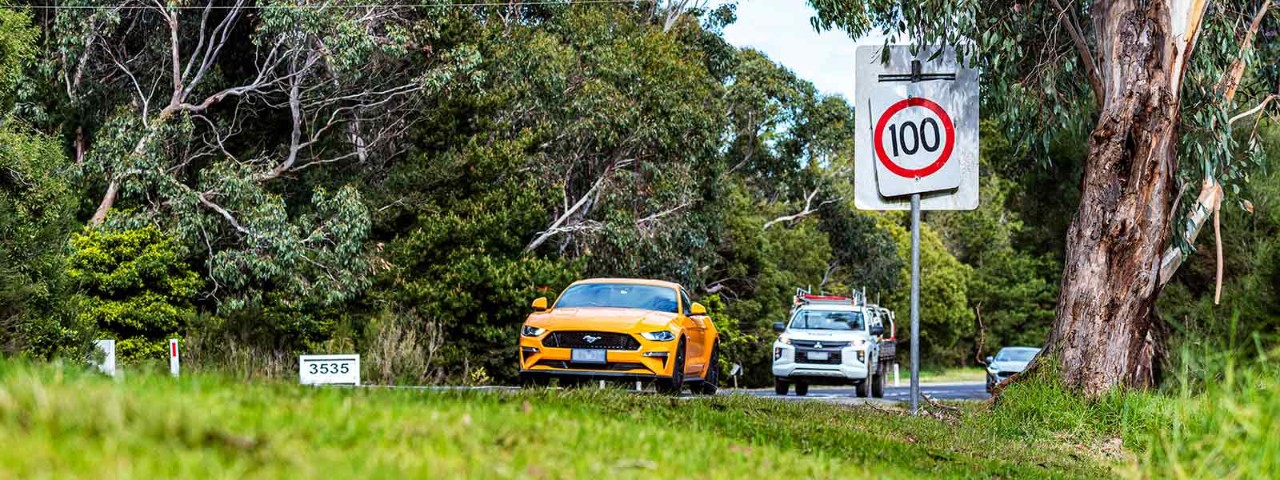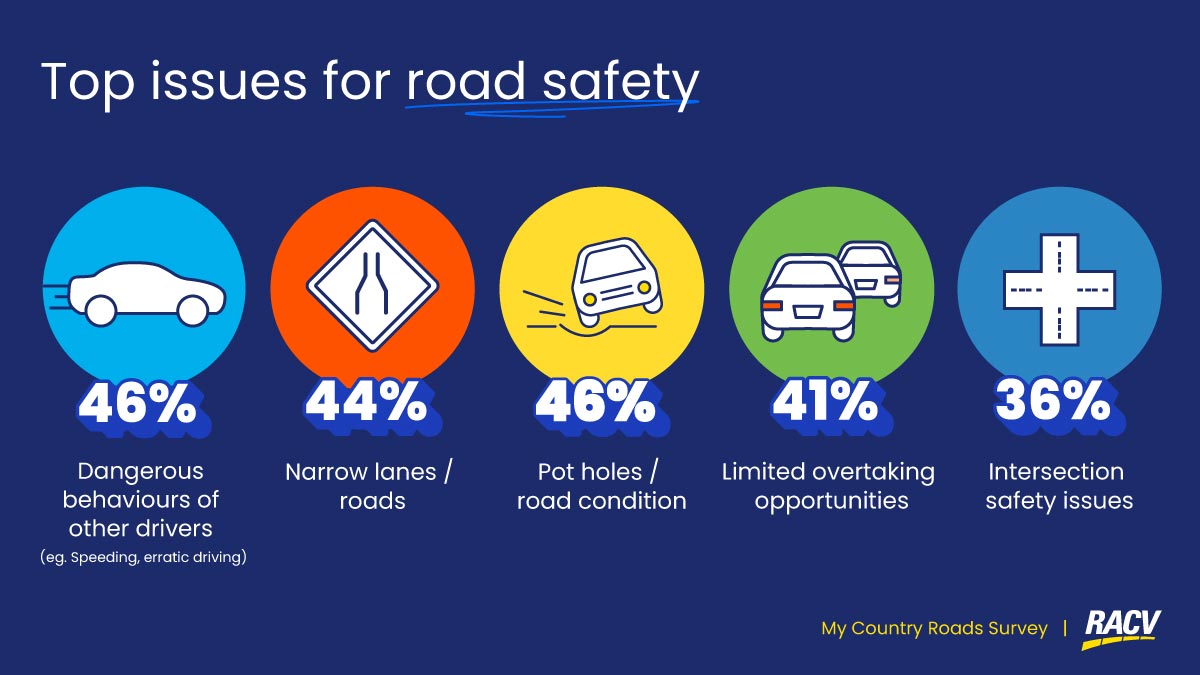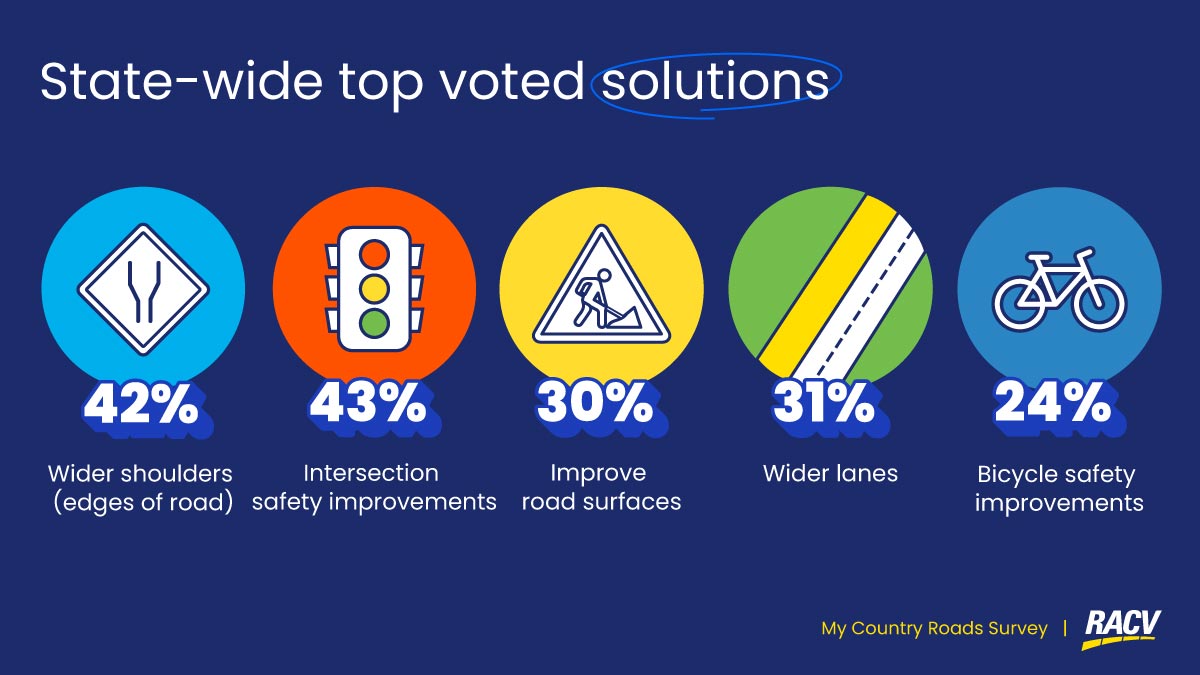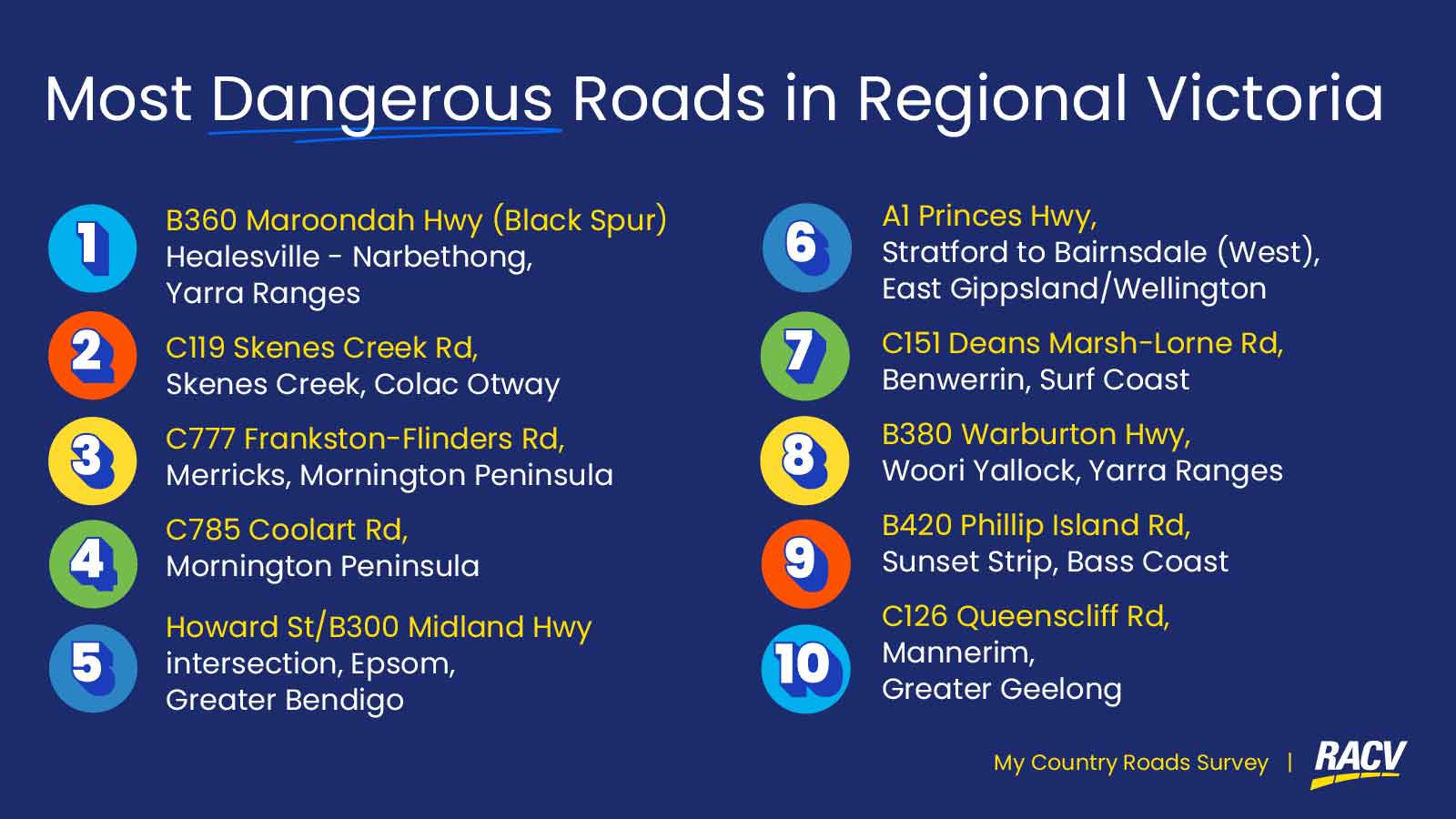New turbo-petrol MG7 brings a sporting flavour to the family passenger car segment, where the Toyota Camry Hybrid and BYD Seal EV dominate sales.
Victoria’s most dangerous regional roads revealed

More than 4,000 Victorians have voted in RACV’s My Country Road survey on the most dangerous regional roads across the state.
The My Country Road survey has revealed what Victorian motorists believe are the most dangerous regional roads across the state.
As restrictions begin to ease across Victoria and the prospect of summer road trips becomes more likely, the My County Road survey has presented a timely reminder for Victorian motorists to be vigilant and consider the hazards on our roads before planning any travels.
The survey used an interactive map showing high-speed roads that had large incidents of crashes that caused death or serious injury across regional Victoria. Participants provided feedback by clicking on one of 169 highlighted roads, or by dropping a pin on an area of their choosing.
Not only could respondents identify what they believe to be hazardous areas, the survey also sought comments from people with local knowledge to indicate why they felt that area was dangerous.
Top 10 most dangerous regional roads in Victoria
With more than 4,000 responses, hundreds of different hazardous areas were identified by the survey. You can navigate the interactive map here to view the most hazardous areas in each region of Victoria.
The Princes Highway from Stratford to Bairnsdale in East Gippsland received the most responses, followed by Deans Marsh-Lorne Road in Benwerrin, Surf Coast and the Warburton Highway at Woori Yallock in the Yarra Ranges.
The roads listed below are the top 10 areas that were voted as most dangerous across Victoria:
- A1 Princes Hwy, Stratford to Bairnsdale (West), East Gippsland/Wellington
- C151 Deans Marsh-Lorne Rd, Benwerrin, Surf Coast
- B380 Warburton Hwy, Woori Yallock, Yarra Ranges
- B420 Phillip Island Rd, Sunset Strip, Bass Coast
- C126 Queenscliff Rd, Mannerim, Greater Geelong
- B360 Maroondah Hwy (Black Spur), Healesville to Narbethong, Yarra Ranges
- C119 Skenes Creek Rd, Skenes Creek, Colac Otway
- C777 Frankston-Flinders Rd, Merricks, Mornington Peninsula
- C785 Coolart Rd, Mornington Peninsula
- Howard St/B300 Midland Hwy intersection, Epsom, Greater Bendigo
A staggering 80 per cent of survey respondents were quick to identify a location or strip of road they would consider ‘dangerous’ or ‘very dangerous’. Despite many motorists often complaining when speed limits are reduced, 61 per cent of respondents believe the speed limit on the selected roads should be lowered to improve safety.
While the survey gave Victorians the opportunity to identify the most dangerous areas, it also presented an opportunity to offer guidance on how to improve them. Improving the roads surface was the top solution (43 per cent) while widening the shoulder (42 per cent) and widening the lanes (31 per cent) were amongst the top solutions.
The road ahead
The survey has given an insight into the challenges of Victoria’s regional road network, and the information gathered will be provided to government for consideration on improving Victoria’s regional roads.
“As a safety advocate, it’s important that RACV closely examines what Victorians think are the factors contributing to less safe conditions, so we can provide that information to government to help inform their planning,” said RACV’s Executive General Manager Motoring and Mobility, Phil Turnbull.
“The local knowledge 4,000 Victorians have provided us about safety on our regional roads is invaluable. The number of responses received for each road is a good indicator that Victorians think these roads need improvement.”
In the 2021-22 State Budget, the Victorian Government committed $95 million toward the upgrade and maintenance of suburban and regional roads, along with $42 million for upgrading local bridges and improving access for heavy vehicles across the regional road network.
While the survey highlighted the need for physical improvements to the road network, Mr Turnbull said driver behaviour should be the first source of focus for Victorian motorists.
“Overall, Victorians felt that dangerous driver behaviour is the biggest contributing factor to safety conditions on our roads. All road users must drive in a safe manner, whether it’s driving at safe speeds, avoiding distractions, or taking a break if we are fatigued.”





